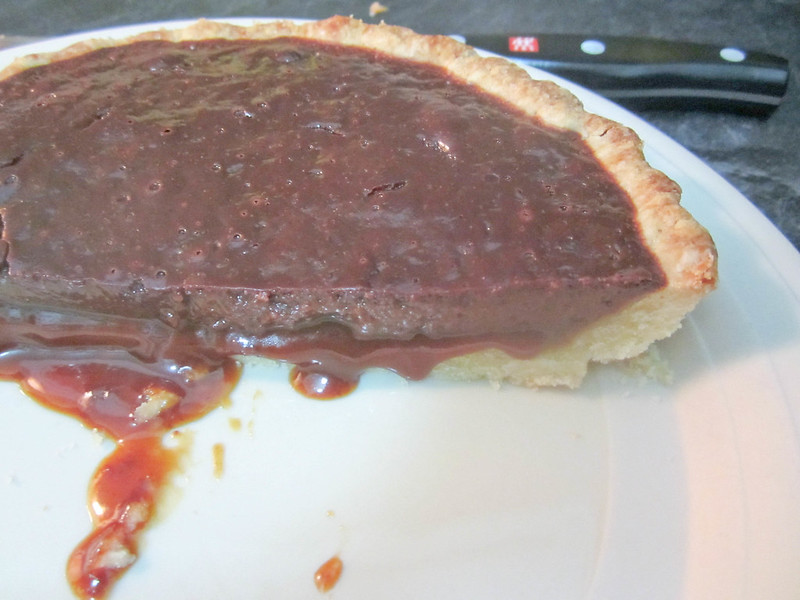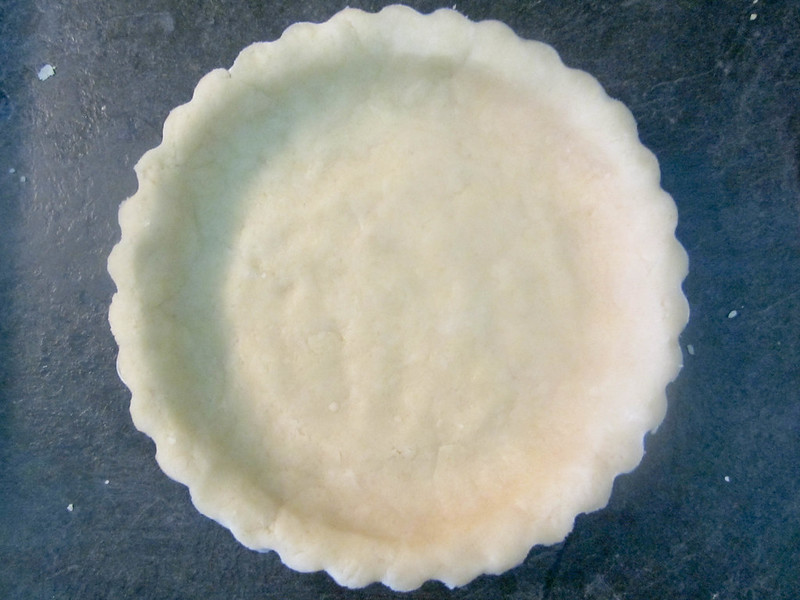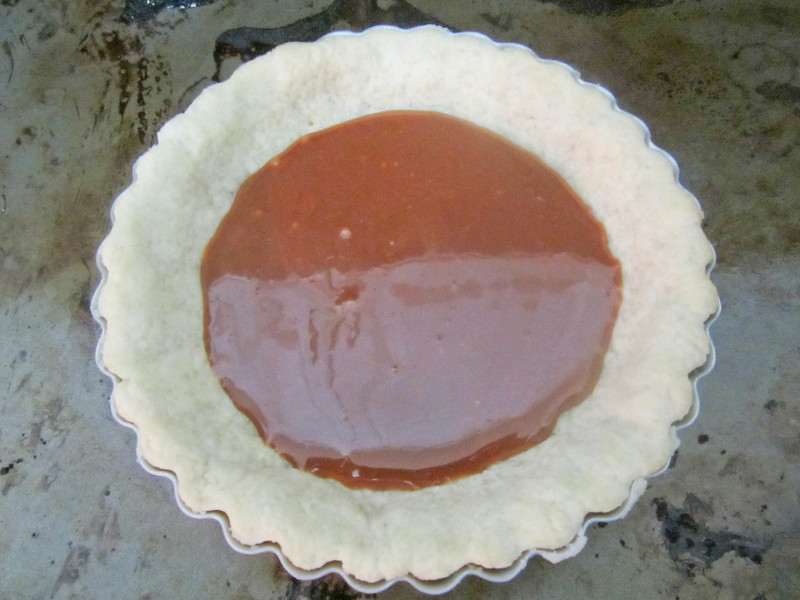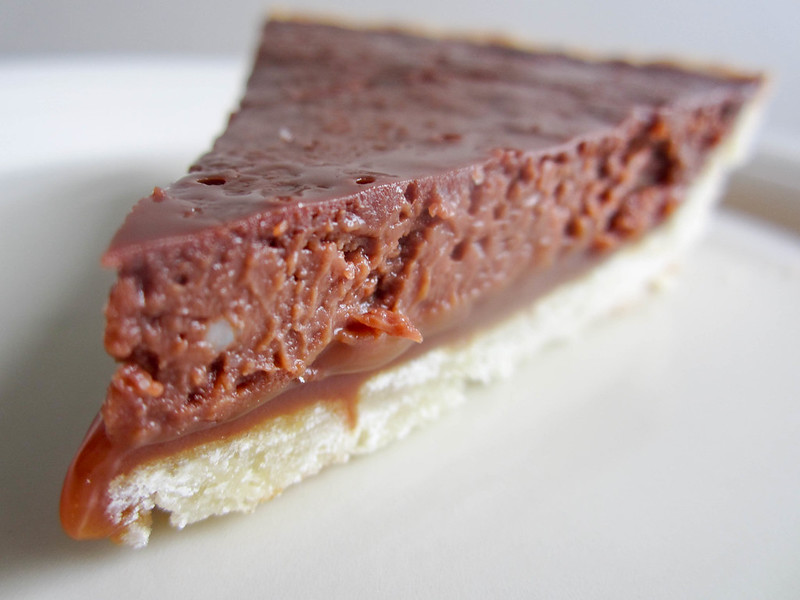I was a little bit unimpressed by pie #4 (again, made mini for J and I). Mostly that was my fault because I grabbed the wrong chocolate and used more of a milk when I would have preferred more of a dark. Despite this, the mousse was smooth and set perfectly and the caramel, made using the dry sugar method (which I find a bit easier than the wet method), was delicious. The tart disappeared very quickly indeed, although you must consider the context of J and I being in the middle of a move and trying not to bring food into the house (this tart was using things up, I swear). At one point, I think this was the only thing immediately available for J to eat (Or maybe that was the crostada ). Also, let's pause for a second and admire the handle of the knife that J and I got for Christmas from his Da and stepmum which, despite constant use, doesn't seem to have properly made it into photos yet.
The recipe calls for a pate sablee to be blind baked before filling it with caramel and then a mixture of cream, chocolate, milk and egg. Fairly straightforward process for such a lovely end product:
General deliciousness aside, I didn't like the pastry. I can't say that I dislike pate sablee, however, because when you look around there's really no consensus about what a pate sablee IS. (Please excuse my lack of appropriate accents in this post.) Everyone agrees that a pate brisee is the basic, unsweetened (mostly) dough that you make for a traditional fruit pie, although apparently here in North America we prefer it to be more flaky (less mixing) whereas in France they prefer it to be more crisp (more mixing). Pate sucree is sweetened, and pate sablee is more sweetened, but other than that there's not much standardization. Any of the three types may call for either cutting the butter into the flour first, or for creaming the butter with the sugar first--since there's no sugar in the pate brisee creaming for that one is less common, but not unheard of. Egg or egg yolks might be an optional ingredient for any of the three, along with various amounts of water (or vinegar). Pate sablee appears to more commonly use confectioner's sugar instead of castor sugar, but not overwhelmingly so, and it may even include almond flour. The particular version I made here called for me to cut the butter into the flour, then added a sugar-egg-water mixture. It was chilled and rolled out, or in my case just pressed into the tart shell (and I am willing to accept that that final step where I pressed instead of rolled could be what ruined it for me).
I don't love it when terms mean nothing, so here's what seems logical to me based on names (broken, sweetened, sandy): 1) Pate brisee calls for cutting the butter into the flour resulting in a "broken" dough, 2) Pate sucree is just a pate brisee with a bit more sugar, and 3) Pate sablee has a sandy texture like shortbread cookies, so should be made however you like your shortbread which in many cases (though not mine) involves creaming butter with confectioner's sugar. There you go, internet, defined! Call your doughs full of almond flour something else.
I actually think that a really good crust for this particular tart would be the one given by Paule Caillat to David Lebovitz who then shares it with everyone else here. It uses none of the standard methods and really appeals to my increasingly slap-dash way of baking things. It basically goes like this:
Paule Caillat's French Pastry Recipe
In an oven-safe bowl, toss together 6 tbsp butter, 3 tbsp water, 1 tbsp sugar and 2 pinches of salt and stick them into the oven at 410F until the butter is bubbly and starting to go brown and nutty. Yum. Remove it from the oven and add about one scooped cup of flour and stir it briskly until it forms a ball. Dump it into your tart pan and flatten it a bit to help it cool down. Once it's cool enough, use your hands to press it into the pan. Prick it all over and bake it until golden brown, again at 410F, about 15 minutes.
David mentions that you can reserve a bit of the dough and squish it into any cracks when it comes out of the oven. This pastry shell is very cookie-like, totally delicious, and would really stand up well to being filled with caramel and chocolate.







No comments:
Post a Comment